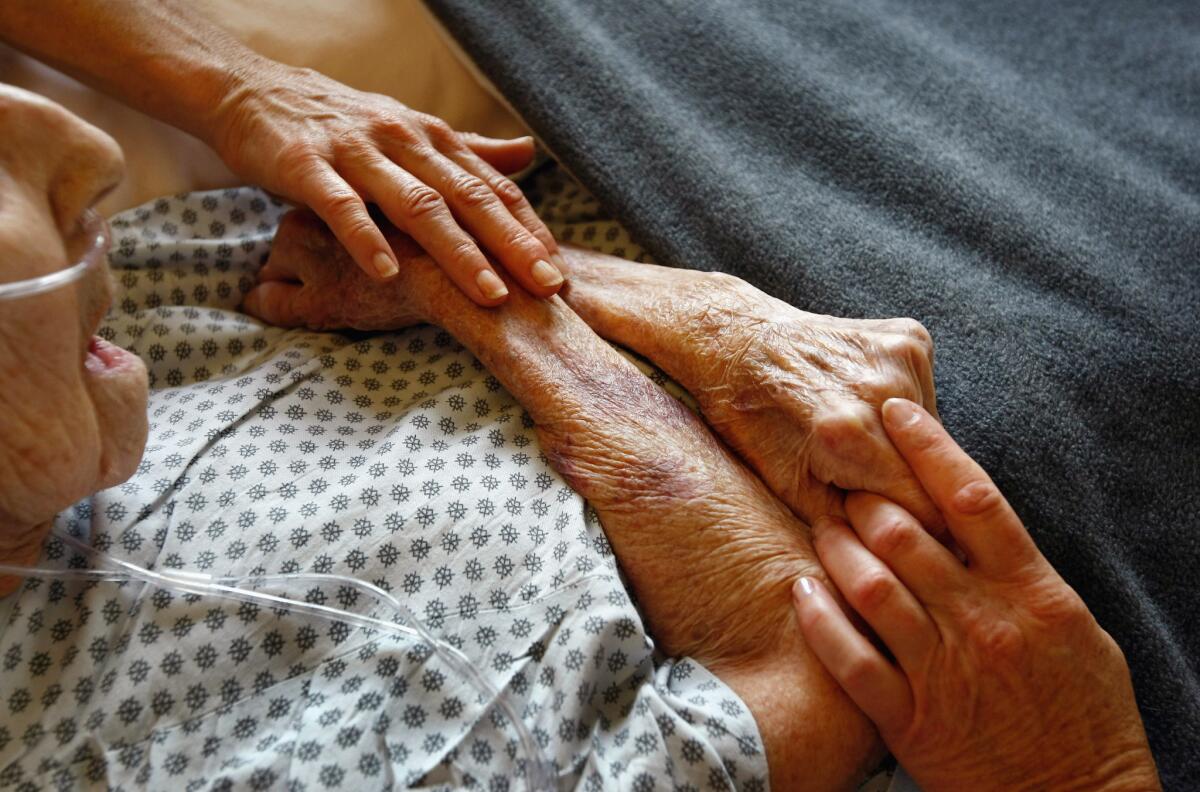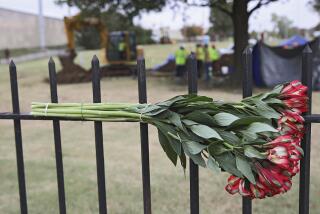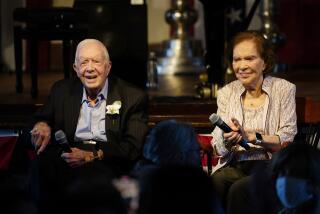More Americans are dying at home instead of in hospitals, report says

For the first time since the early 1900s, more Americans are dying at home rather than in hospitals, a trend that reflects a growing embrace of hospice care and the kind of end-of-life experience that most people say they want.
Deaths in nursing homes also have declined, according to a report in this week’s edition of the New England Journal of Medicine.
“It’s a good thing,” said Dr. Haider Warraich, a cardiologist with the Veterans Affairs Boston Healthcare System and the study’s senior author. “Death has become overly medicalized over the last century” and this shows a turn away from that, he added.
Warraich and Duke University graduate student Sarah Cross used government health statistics on deaths from natural causes between 2003 and 2017. During that time, the proportion that occurred in hospitals fell from 40% to 30%, and the number in nursing homes dipped from 24% to 21%.
Meanwhile, deaths in homes rose from 24% to 31%. Some assisted living centers may have been counted as homes; researchers had no way to tell.
People who were younger, female or a racial or ethnic minority were less likely to die at home than people who were older, male or white, the researchers found. Cancer patients were more likely to die at home, but people with dementia and lung diseases were more likely to die in a hospital.
Betsy McNair, a tour guide who now lives in Mexico, said she’s proud of the ending she helped give her father. Robert McNair was 83 when he died at home in Belle Haven, Va., in 2009, six weeks after learning he had lung cancer.
“I made him exactly what he wanted to eat, whenever he wanted it. He had a Scotch every night, he had a very high quality of life. If he woke up at 2 o’clock in the morning and wanted to have coffee and pie, that’s what we did,” she said.
The type of illness matters, McNair said. Besides her father, she helped care for a brother who died of Lou Gehrig’s disease in his 50s, and her mother, who died at age 92 in a nursing home after a long decline in health.
“They were all completely different experiences,” and sometimes it’s not possible to adequately care for a family member at home, McNair said.
Allison Beach and her husband struggled to figure out how to get help for her mother, Kathryne Beach, who lived with them for three years before dying at their home in Hinesburg, Vt., in 2016. She had lost her vision, had suffered a fall and then succumbed to heart failure at age 91.
“We had to really reshuffle our lives. I was determined not to put her into a facility,” said Beach, who is a nurse. “We were alone with her at the time of death and I wish we had had more support.”
The experience led Beach to seek special training in end-of-life care, hoping to help others in such circumstances.
The rise of home hospice services has helped more people spend their last days at home, Warraich said.
“I have met many patients who just want to spend one day at home, around their dog, in their bed, able to eat home food,” he said.
People are not only living longer, but they’re often spending more years at the end of life with chronic illnesses.
“Ideally we’d like to see people live longer and with fewer disabilities,” he said. “We have work to do there.”






